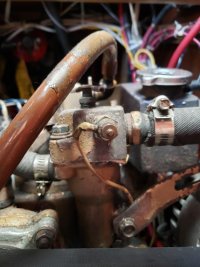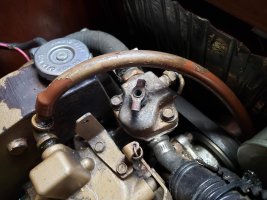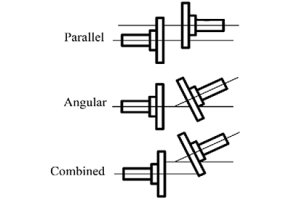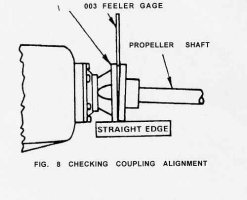Wow, thank you all for the great advice - very much appreciated!
Glenn, I got similar advice from a diesel mechanic today. In particular, he recommended giving it a good run before bothering to hook up a compression tester. What led to take the RPMs up last weekend was the recent realization that I haven't been doing the engine any favours by babying it. I'll start to follow your recommended operating procedure.
Christian, to your comment about temperature, the diesel mechanic asked me how hot the engine gets and I told him that the temperature gauge only moves above the lowest level (120F) if I'm motoring for 30+ minutes. And that I have never seen it climb higher than 140F. He said that it should be hitting 160F within a few minutes of startup. He seemed to feel that part of my problem may be a "stuck" thermostat that is leading to the engine running colder than it was designed for. Indeed, I see that the manual calls for an engine operating T of 165 to 195F. It also says that the valve opening T in the thermostat is 140F and that the valve will be wide open at 165F. Some extra thermostats came with the boat (picture below). Based on the manual, the thermostat should be in the location pictured in the second and third pictures. I'm assuming that if I unbolt that housing I'll be able to pull the existing one out and replace it.



Christian, also to your comment about the tach, that may turn out to be the solution. The tach was temperamental last year. I traced the problem to a contact that had vibrated loose. I checked that today and found that it had backed off again. I reseated that and ran the engine and the throttle level to achieve a given RPM level was lower than what I was seeing on the weekend. And at 2500 RPM there was no blue smoke. I'm suspicious now that the tach has been reading inaccurately (low) and that the blue smoke was associated with significantly higher RMSs than the gauge was telling me. That would also explain why I have been seeing higher speeds than you for similar purported RPMs. I didn't have some to take the boat out today - I'll do that on the weekend and take note of what speeds I achieve with what I believe will be more accurate RPM readings.
Reginald, that's a good observation regarding dino oil versus synthetic. I used semi-synthetic because that is what the previous owner used, but I'll give regular dino oil a try when I next do an oil change.





